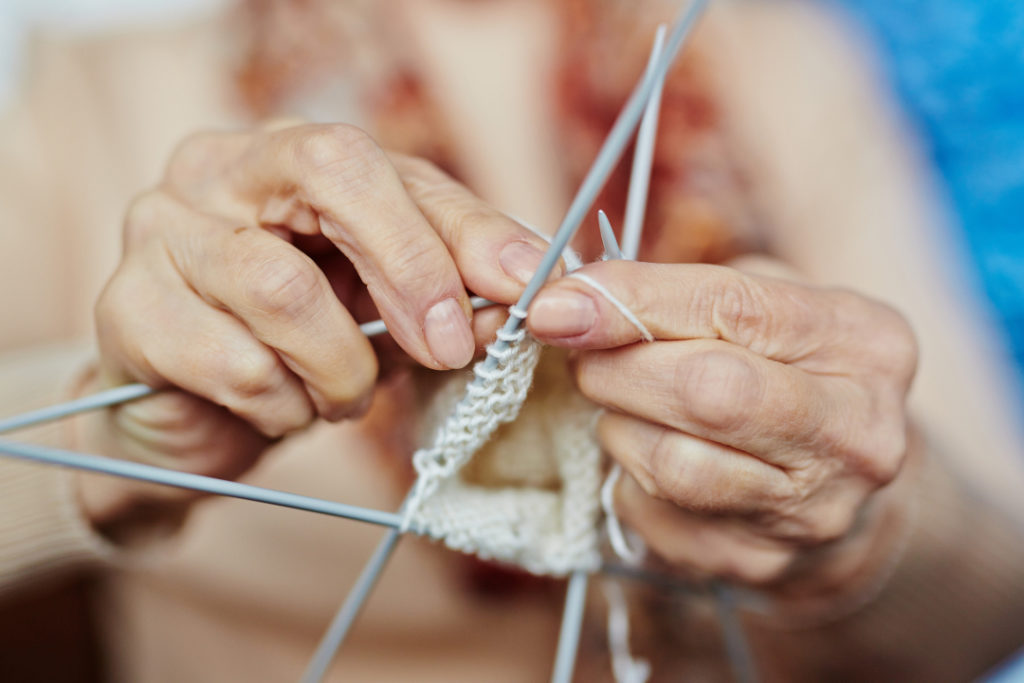From my earliest days, I remember my grandmother encouraging me to never sit idly watching television, but always to be doing something with my hands while the screen was active. She would knit, I would color. When I was a little older, my mother shared her love of embroidery with me, and we’d each have a crewel project to work on while catching up on M*A*S*H or Mary Tyler Moore.

Bubbie, my stepfather’s mother, also liked to keep her hands busy. On a visit to our house, my mother gave her a quilting kit to make a pillow. Within a couple of years, she’d made two pillow shams and a matching quilt. She did all the patchwork by hand, and we took the finished pieces to a professional for the final quilting. She gave the set to my parents, who ended up giving it to me. The pillows went on my couch, and the quilt hung over the wall of the balcony that was my upstairs hallway until we took it down for the move to Florida.
Embroidery, knitting, and quilting are more than home economics projects; they fall into the category of fiber arts. And it’s this artistic aspect that is so important for caregivers and care recipients alike. Not only are these handicrafts a form of self-expression, but the finished projects are also gifts of love – gifts that don’t strain the limited budgets many of our elders must live within.
Engaging in arts and crafts is helpful in encouraging calm behavior, but it’s a way to connect. When my grandmother had deteriorated to the point where she couldn’t remember which daughter was visiting or recall my grandfather’s name, she could still sing along with me as long as I picked a classic showtune or a selection from the Great American Songbook.
Similarly, Bubbie, who had always wanted a piano, found focus and pleasure when she first bought an instrument and then took so many piano classes (at a discount) from the local Junior College that if there was such a thing as a degree in Group Piano, she’d have graduated magna cum laude.
These are mere examples of the many options for arts and crafts that caregivers and care recipients can do together, whether the recipients are elder family, young children, or grown children with special needs. Working with clay or helping to make bread is not only creative, but can be soothing to older, arthritic hands while also being easy for small hands to manipulate. An art coloring book can be fantastic for people who love to color but aren’t interested in childish subjects. (Personally, I find coloring very Zen, and I have an app on my iPad that gives me a great variety of color-by-number pieces. I bought an Apple pencil to make it easier, but any capacitive stylus will do if fingers are too stiff, or in my case, too fat.)
And I’ve mentioned before that engaging in theater games, like improvisation, can help us engage with our loved ones who have dementia. Saying “yes and” to whatever scenario they believe they’re in, as opposed to correcting them, is much gentler, and prevents the recurring trauma of being told someone is gone. Again.
As caregivers, it’s important that we allow time for our own self-expression and creative outlets, as well as encouraging creativity in the people we care for. Arts and crafts are a way to do this while still spending time with them. It’s a connection with a break from conversation (not that talking isn’t wonderful), and it’s a shared activity that benefits us all.
